LEARN / ARTICLE
Champ Camp Air Quality is 88% Cleaner After Becoming a Clean Air Zone
CAZ Stories is a series of articles highlighting the significant impact of Clean Air Zones in diagnosing and mitigating indoor air quality issues for childcare facilities in Indonesia. For more information, read our previous CAZ Stories:
- AC Ventures
- Mighty Minds Preschool
- Global Shipping Company
- Mazars Indonesia
- IShine Kelapa Gading
- YCAB Foundation
- New Zealand School
- Kinderfun Preschool
- Green Montessori School
- HEI Schools
- Neuro Care by Klinik Pintar
Air pollution continues to be a significant problem and challenge for Jakarta to this day. The capital city's annual pollution level in 2023 reached 38 µg/m3, far exceeding the annual average national ambient air quality standard of 15 µg/m3 set by Indonesia. This figure is also seven times higher than the annual guidelines of the World Health Organization (WHO).
The WHO identifies PM2.5 as a critical health hazard due to its very small size, which can be inhaled into the lungs when we breathe. PM2.5 poses a threat to the entire population in general, but the risk is much higher for vulnerable groups, including children under five years old and adults over sixty years old.

Based on tests conducted by the Nafas team in the field, the level of outdoor air pollution leaking into buildings can reach up to 100%. This is particularly concerning for residents living in highly polluted cities like Jakarta.
An article by Nafas titled "Our Buildings Make Us Sick" emphasizes that air pollution is not just an outdoor problem but also an indoor one. In highly polluted cities, indoor air quality is often as high as outdoor air quality. This means that pollutants from the outside enter and contaminate indoor air quality, including in childcare facilities. Therefore, maintaining healthy indoor air quality should be a standard, not just an additional facility.
Impact of Air Pollution on Children
A study published in the Kosin Medical Journal by researchers from South Korea and Japan investigated the short-term effects of PM2.5 on children. The study found that the risk of asthma attacks in children increased by 9% when the concentration of PM2.5 increased by 10 μg/m³ from a baseline of 15 μg/m³ on the day before the asthma attack (Lee et al., 2018).
In response to this issue, Nafas collaborated with Champ Camp to improve indoor air quality to create a healthy environment for children and staff.
Issue: Poor Air Quality at Champ Camp
To assess the extent of outdoor air pollution entering Champ Camp, Nafas used air quality monitors connected to a cloud system. These devices monitored levels of PM2.5, CO2 levels, temperature, and humidity.
Looking at data from May 2023, we noted that the trend of indoor (represented by the blue line) and outdoor (represented by the black line) air quality was almost equally high. This is concerning because indoor pollution levels often exceed 15 µg/m³, the recommended 'Good' air quality limit in studies.
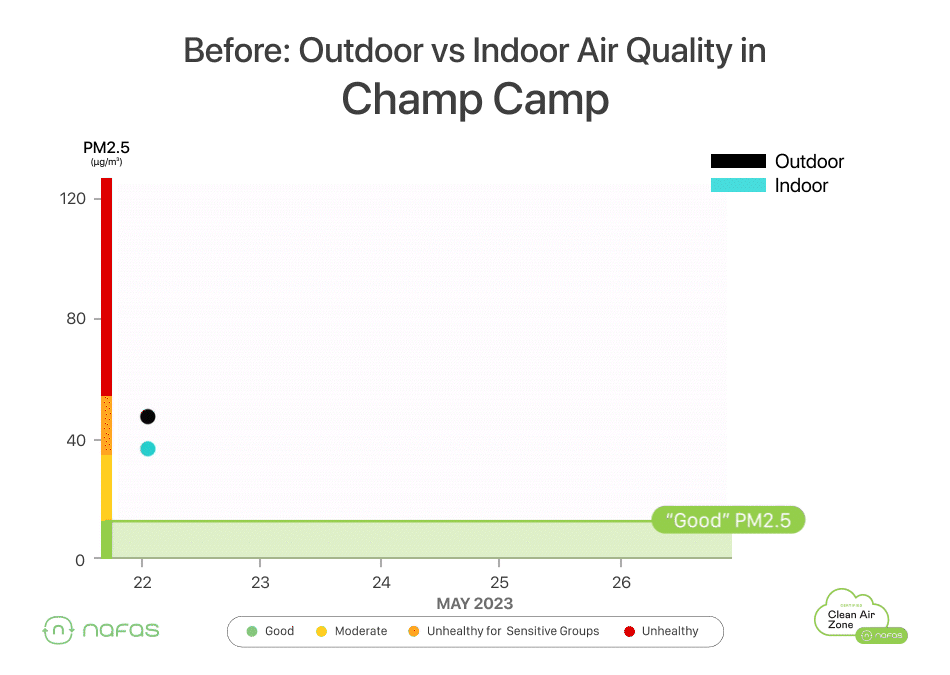
Field test results showed that peak PM2.5 levels inside the Champ Camp childcare facility reached nearly 70 µg/m³, five times higher than the maximum limit recommended by the study of 15 µg/m³!
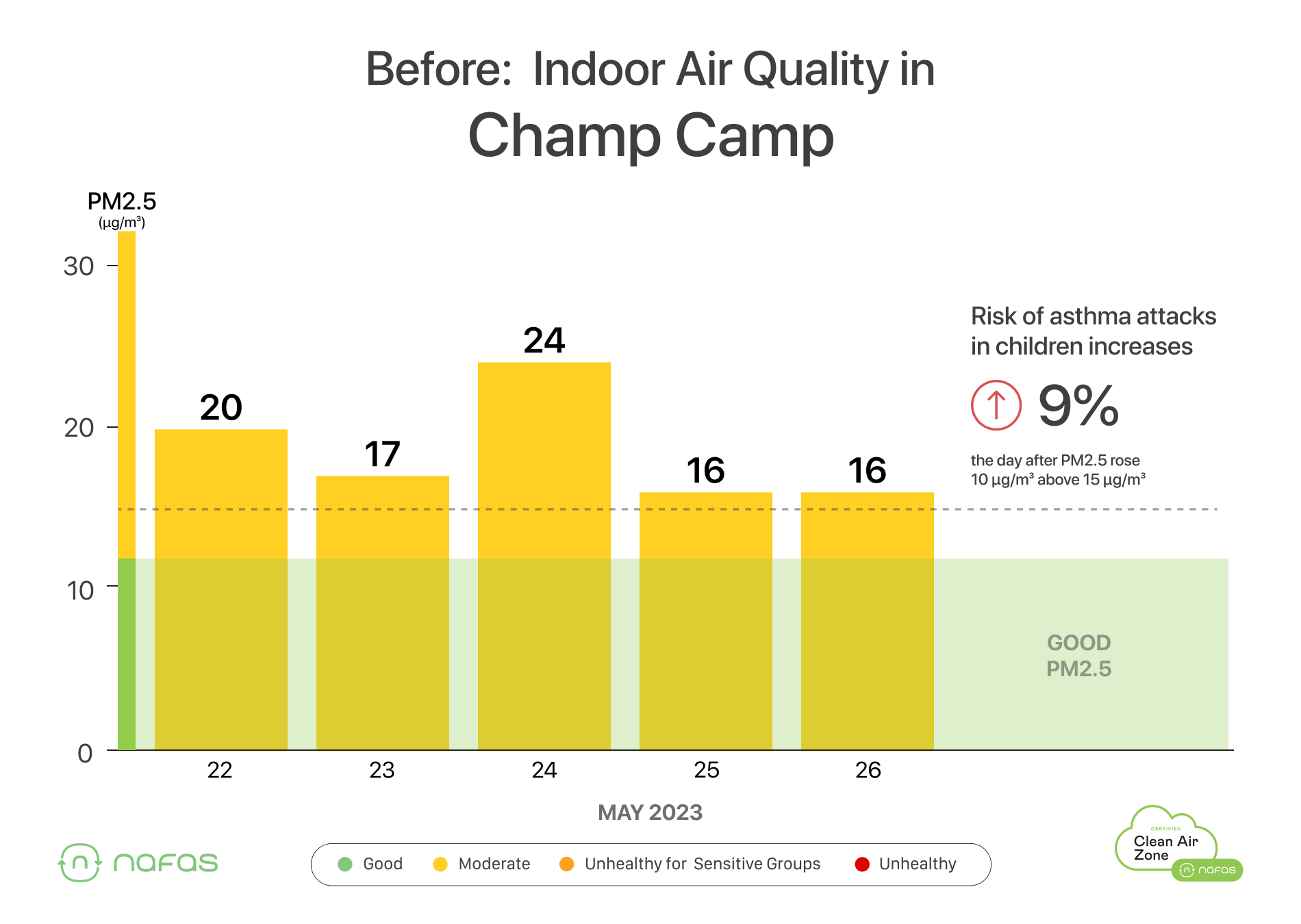 The existing building infrastructure was unable to filter out outdoor pollutants and maintain healthy indoor air quality in classrooms to avoid the risk of asthma attack on children. This situation underscores the urgent need to add air filtration in childcare facilities to create a healthy environment for students, teachers, and staff.
The existing building infrastructure was unable to filter out outdoor pollutants and maintain healthy indoor air quality in classrooms to avoid the risk of asthma attack on children. This situation underscores the urgent need to add air filtration in childcare facilities to create a healthy environment for students, teachers, and staff.
Solution: Transforming Champ Camp into a Clean Air Zone
To address poor indoor air quality in buildings in polluted cities like Jakarta, Nafas has developed the Clean Air Zone system. This ecosystem is comprehensively designed to maintain healthy indoor air quality throughout operational hours. This can be achieved through an automated and integrated system that includes accurate air quality measurements, effective air filtration techniques, strong certification standards, and data-driven programs involving stakeholders.
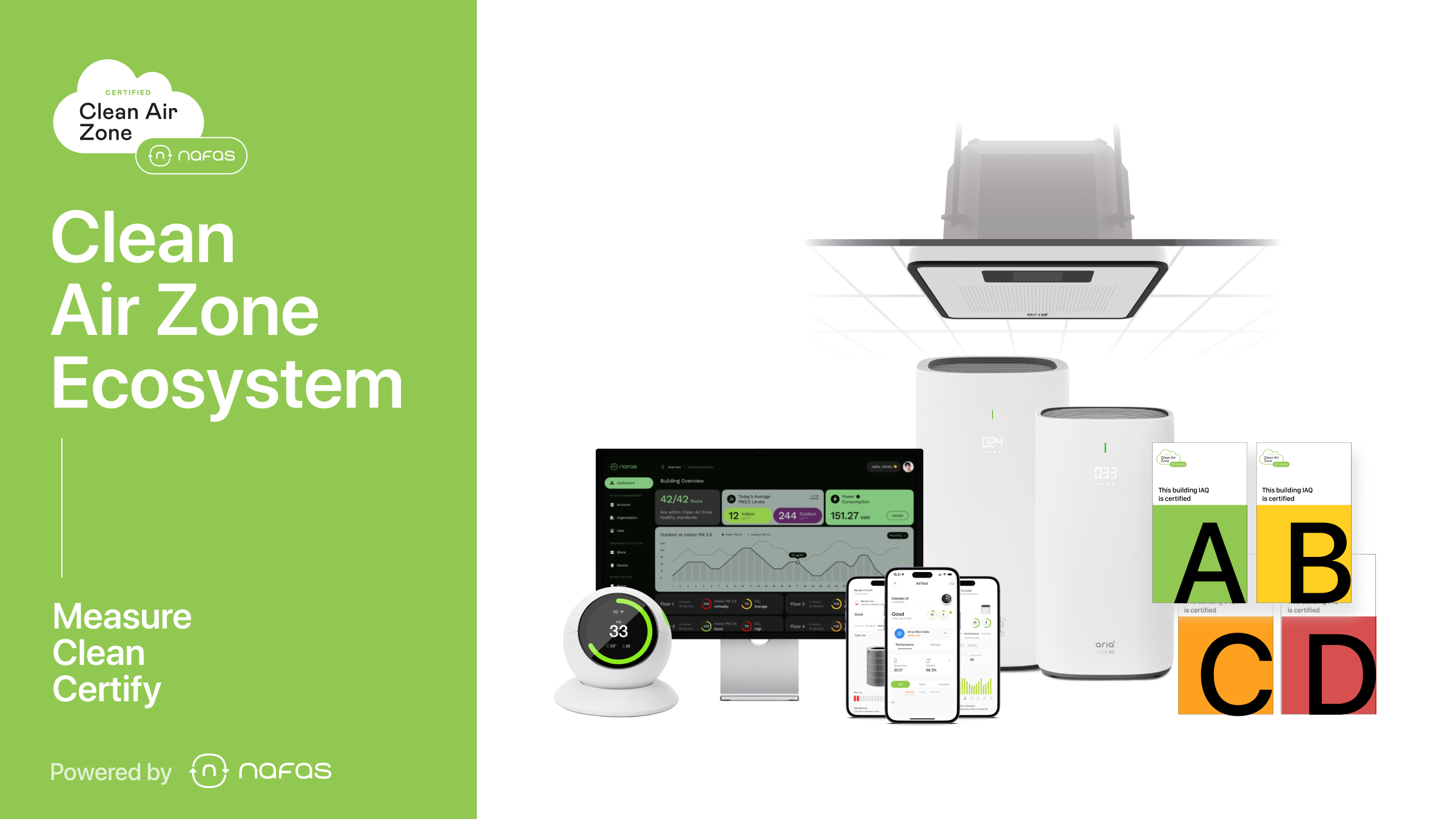
Our services can be obtained through a subscription model without upfront investment. The Clean Air Zone ecosystem can help improve indoor air quality in childcare facilities easily and practically.
Results: Drastic Reduction in Pollution at Champ Camp Jakarta
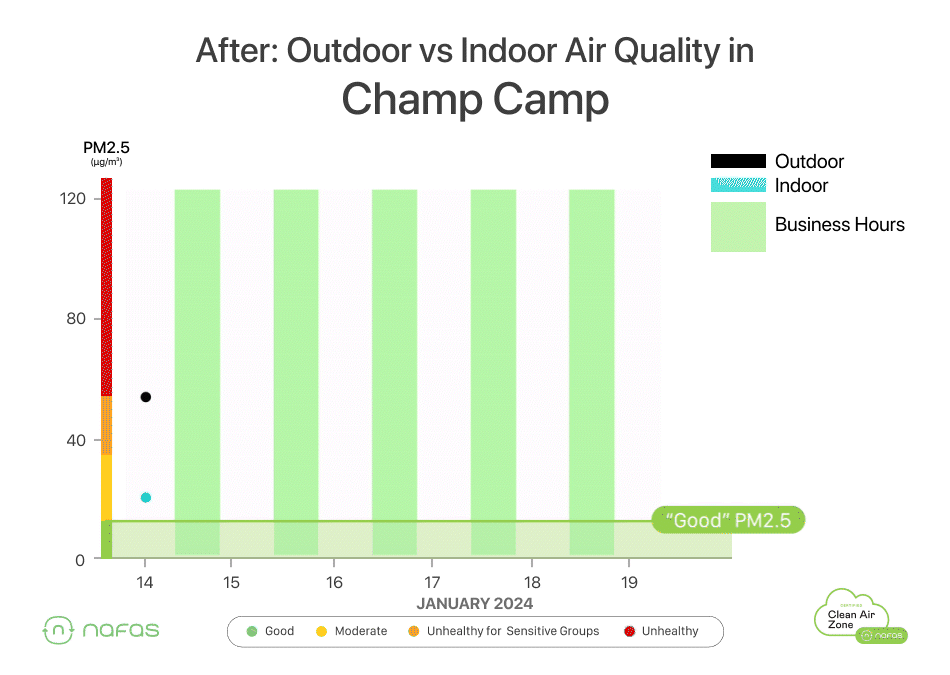
In January 2024, Champ Camp transformed into a Clean Air Zone. The collaboration between childcare providers and Nafas highlights the importance of healthy air in learning spaces within childcare facilities.
Air quality data collected by the Nafas team during January 2024 showed a significant comparison of indoor air quality before and after Champ Camp became a Clean Air Zone.
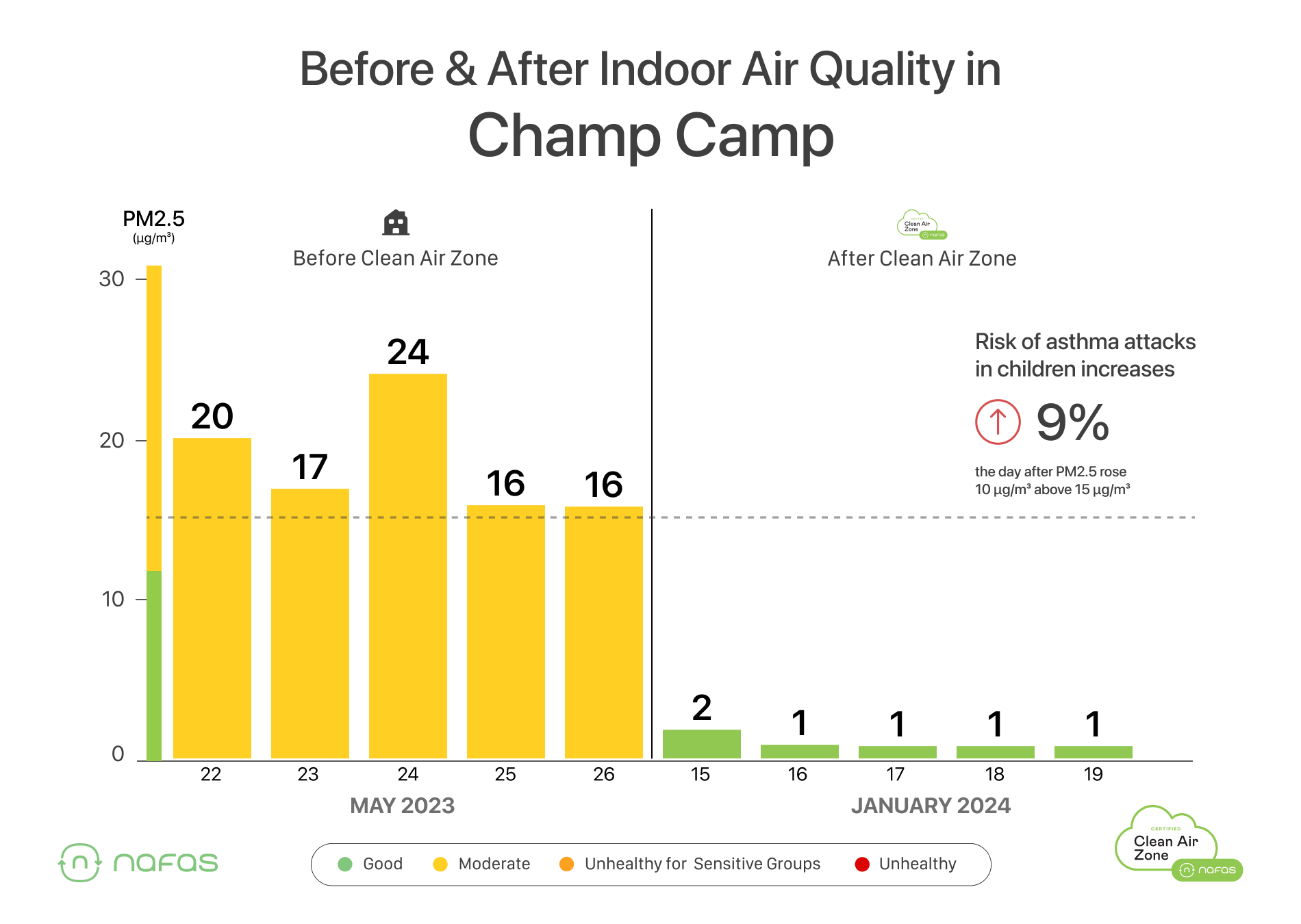
As a result, the air quality inside the Champ Camp consistently achieved a 'Good' rating over a month.
Overall, the average of indoor air quality at Champ Camp is 88% cleaner after becoming a Clean Air Zone. During operational hours, children can breathe cleaner and healthier air.

Monthly Air Quality Reports
Through the data-driven Clean Air Zone service, childcare facilities will receive monthly reports containing air quality metrics for the previous month. Childcare facilities can share this information with parents, teachers, staff, and stakeholders, ensuring transparency and encouraging informed engagement.
Below is an example report received by Champ Camp each month:

Becoming a Clean Air Zone is Easy
Interested in ensuring healthy air quality in your childcare facility? Feel free to contact us at [email protected], or click the link below and join our mission to make clean air the standard in our childcare facilities!
